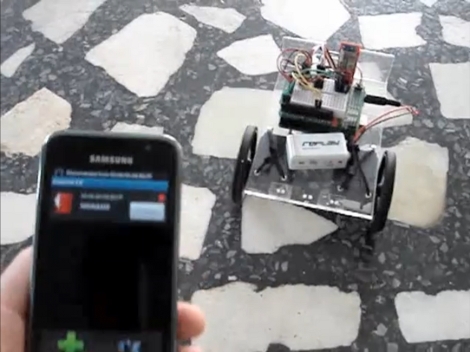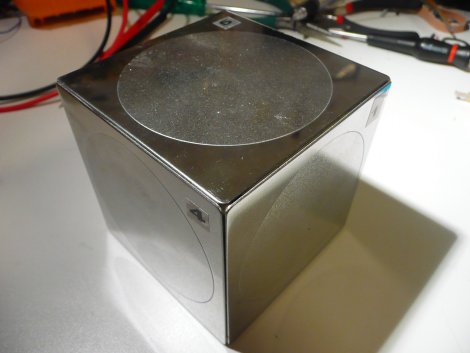
[Lucas Fragomeni] is controlling this robot using the accelerometer on his Android phone (translated). He could have gone through our Android tutorials and developed a custom application but he took the shorter route and used Amarino, an ‘Android meets Arduino’ toolkit, to do it for him. [Lucas] combined an Arduino, a BlueSMiRF Bluetooth modem, and two servo motors to build his robot. Amarino lets him connect to that Bluetooth modem and send sensor data over the connection. In this case it’s only the accelerometer that he chose to use, but he could have gone with the touchscreen, or any other sensor the handheld has to offer. Using this code package got him up and running quickly, only requiring that he writes his own code to turn the received signals into servo motor control routines. See it in action after the break.
Continue reading “Amarino Makes Android Controlled Robots A Snap”


















